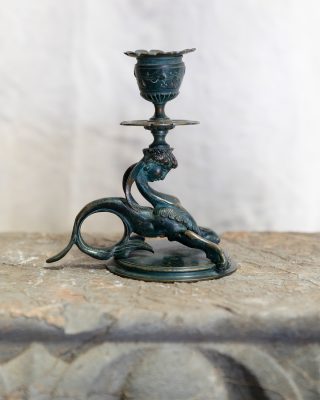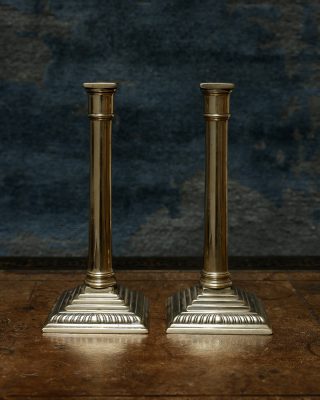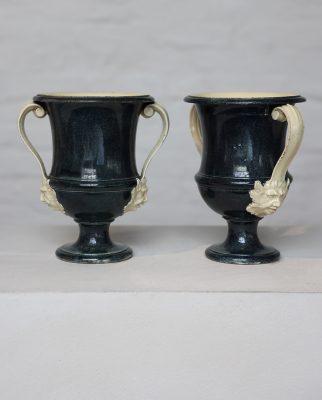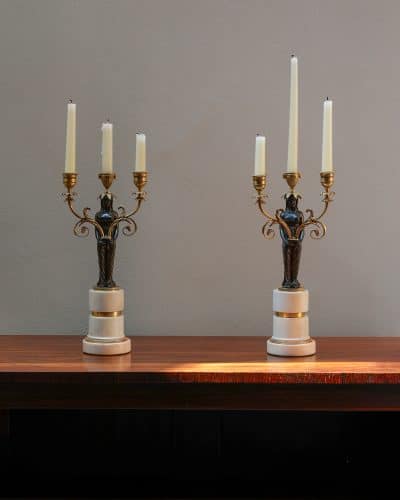
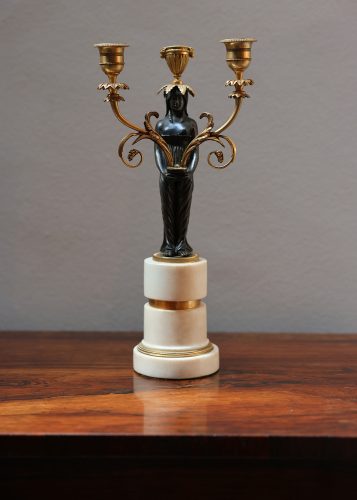
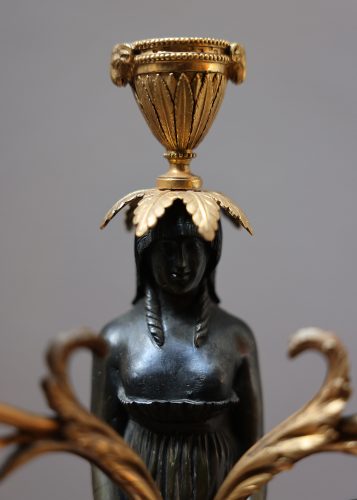
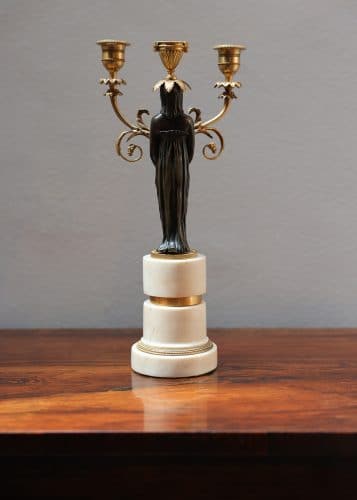
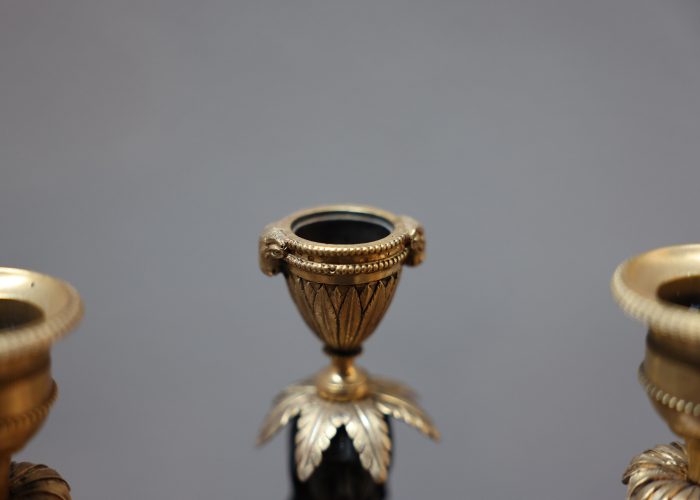
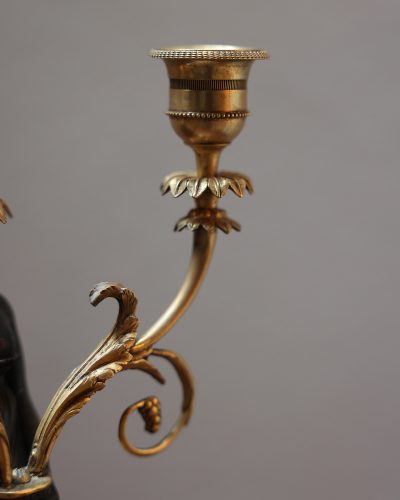
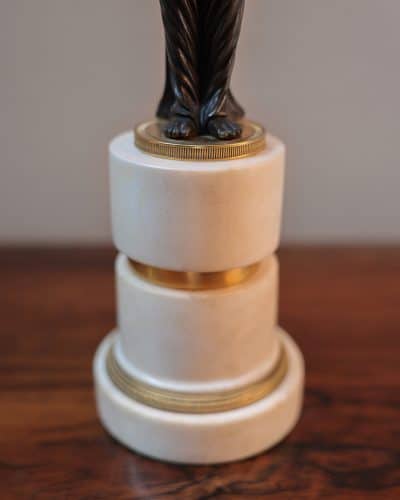
Pair of Regency Candelabra in the Egyptian Taste
A fine pair of Regency gilt and patinated bronze candelabra or candlesticks in the Egyptian taste, each in the form of a female figure supporting an Adam style feather clad urn on her head, with ram’s head lifts and holding scrolling leaf branches with twin lights, supported on a white marble pedestal with ormolu decoration. English, circa 1805
The Egyptian Revival dates from the beginning of 19th Century, an aesthetic inspired by Nelson’s victory of the Nile (1798) and Napoleon Bonaparte’s expedition to Syria and Egypt between 1798 and 1801. After Napoleon’s military campaign, Vivant Denon, the leading archeologist of the expedition had a bedroom fitted by Jacob Desmalter to his own design in the Egyptian style and published Voyages dans la Basse et Haute Egypte in 1802 which prompted a larger following of the archaeological revival in English furniture inspiring designs by Thomas Hope and George Smith. In his 1807 publication Household Furniture and Interior Decoration, Hope dedicated a whole room to the style, the decoration referencing Egyptian mummy cases and papyri, the colouring on the walls and ceiling pale yellow and blueish green, relieved by the masses of black and gold. This enthusiasm for the Egyptian taste in England continued to grow, the archaeological motifs of sphinxes and palmettes featuring in many designs at great country houses.
This particular candelabrum recalls the style of Alexis Decaix, a French-born bronzier who came to London as a refugee from the French Revolution, he worked for silversmith Garrard in Piccadilly, and manufactured many designs for Thomas Hope in the Egyptian and neoclassical taste.
Dimensions
Maximum width 178mm/7"Maximum height 362mm/14 1/2"
Maximum depth 95mm/3 3/4"
